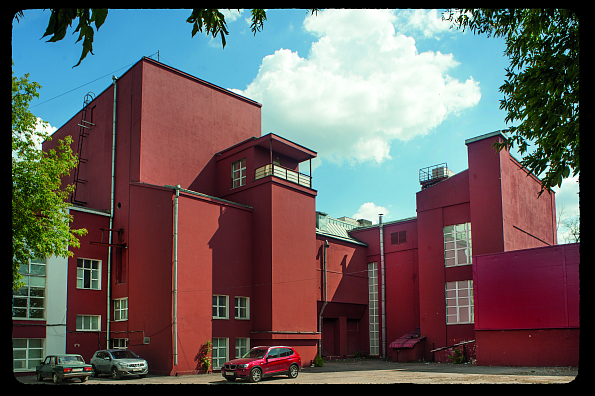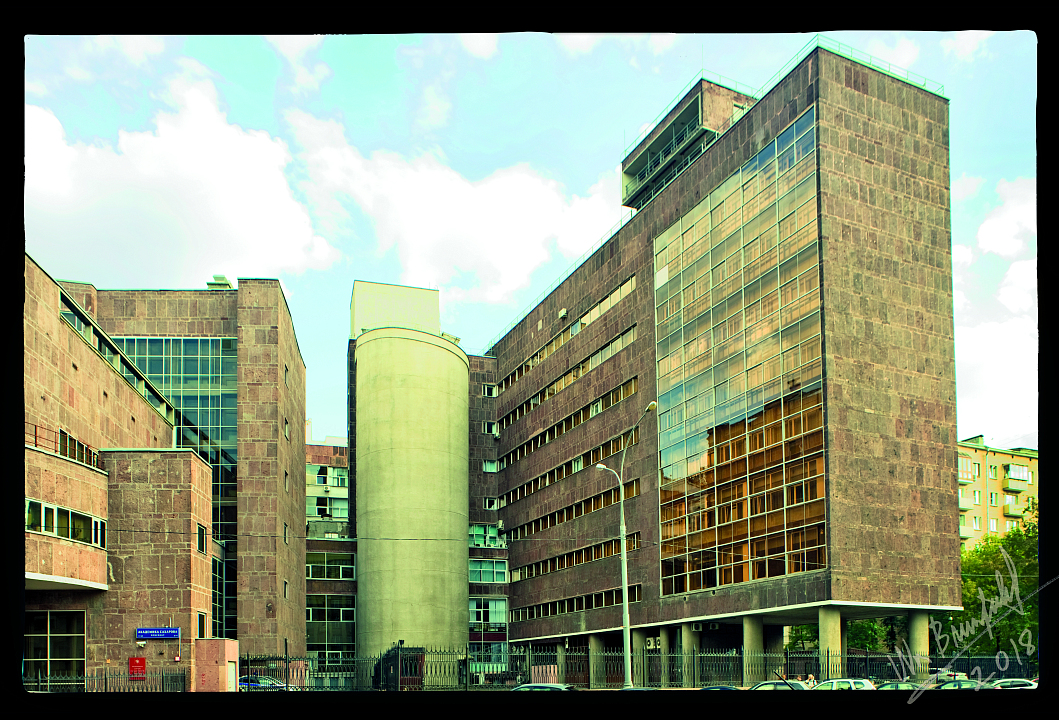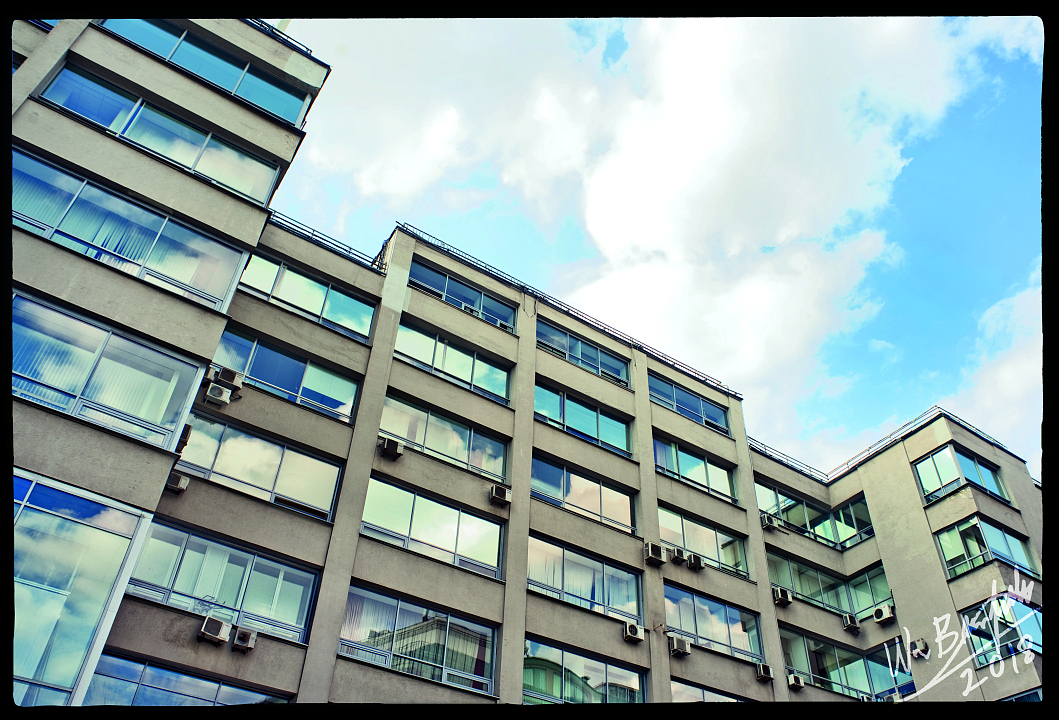24.07.24

“The architecture of the Russian avant garde is a flight of the human spirit.”
William Craft Brumfield
The new exhibit at the A. V. Shchusev State Museum of Architecture – “The Russian Avant Garde through the Lens of an American Photographer. Celebrating the jubilee of William Brumfield” – coincides with the 80th birthday of a long friend of the Museum, the Professor of Slavic Studies at Tulane University (New Orleans), William Craft Brumfield – a person who has devoted his life to an understanding of Russian culture and to sharing it with the world.
In 1966 William Brumfield received a bachelor’s degree in the Russian language at Tulane University and, in 1973, a doctoral degree in Slavic languages and literatures at the University of California, Berkeley. Brumfield’s first trip to the USSR occurred in the summer of 1970 as part of the teachers’ exchange with Moscow University. The 120 slides that he brough back represented his first experience in photography. From 1970 until the early 2000s, Brumfield photographed on film and then switched to digital cameras. Today the large part of his film work has been digitized and the entire photographic collection consists of over 150,000 images. William Brumfield’s photographic legacy is preserved at the National Gallery of Art in Washington, DC, and in Russia, at the A.V. Shchusev State Museum of Architecture.
Natalya Shashkova, Director of the A.V. Shchusev Museum of Architecture: “The cooperation between William Brumfield and the A.V. Shchusev Museum of Architecture began in 1979, and this connection has remained firm in all historical circumstances. Brumfield’s first exhibition at our Museum took place in 2001 and was dedicated to the Russian North. In 2023, his exhibit “Lost America” spoke not so much about the objects photographed but about the aesthetic of the “lost” places – abandoned and isolated. This year the Museum presents this photographer-researcher’s works dedicated to the architecture of the Soviet avant garde to which he turned his attention in those years when the creativity of avant-garde architects was not as popular as today. Brumfield’s photographs record the far from simple fate of buildings from the 1920s and 30s: their unsightly aging and, in some cases, complete decline, as well as more or less successful restoration efforts during the first years of the fashion for the art of that epoch. William Brumfield’s intensive and loving view again compels us to think deeply about the grandeur and vulnerability of our country’s architectural heritage”.
William Craft Brumfield: “Constructivist architecture was dismissed by many as “faceless” and monotonous, but I became fascinated with the boldness, the power and originality of their design. In particular, I noticed a monolithic quality and a plasticity that reminded me of certain monuments of early medieval Novgorod (Sophia Cathedral, cathedrals of Antoniev and Iurev monasteries) as well as certain churches in Pskov. This was a purely subjective, aesthetic connection, but I found it stimulating. During this process of studying and documenting modernist landmarks, I began to explore artistic, aestheticized approaches to photographing Soviet architecture of this epoch”.
The exhibition is structured around the regions in which Brumfield photographed monuments of the avant garde: Moscow, Leningrad, the section “From the Urals to the Far East” as well as towns in central and southern Russia and the central Volga region.
The section devoted to buildings of the Moscow avant garde is the most extensive; it occupies a greater part of the space. “Moscow always remained the center of my interpretation of the Soviet avant garde”, said Brumfield. This section of the exhibit presents extended series of shots of the author’s favorite sites: the Narkomfin apartment building, constructed to project by Moisei Ginzburg and Ignaty Milinis; the Zuev House of Culture, by Ilya Golosov; the Proletarian District (A.I. Likhachev Automobile Factory) Palace of Culture, by the Vesnin Brothers; the experimental house and studio of the architect Konstantin Melnikov, as well as his workers’ clubs and garages. “I was intrigued by the architecture of Konstantin Melnikov and gave him prominent space in the final chapter of Gold in Azure: One Thousand Years of Russian Architecture, including color and black-and-white photographs of the Melnikov house and the Rusakov Club”, – William Brumfield. These series of photographs illustrate how the photographer returned again and again to many of the same buildings over a period of many years.
Photographs of the Leningrad architectural avant garde compose a separate section of the exhibition. The Leningrad architectural avant garde occupies a special place in the creative biography of William Brumfield. It was in that city in 1971 that the young American teacher of Slavic studies first turned attention to the architecture of the 1920s-30s and began to record it on film. The first photographs in William Brumfield’s “avant garde” collection were of the S.M. Kirov Palace of Culture (by Noah Trotsky), located next to the dormitory were William lived on Vasilevsky Island.
“From the Urals to the Far East” – the third section of the exhibition – reflects the breadth of geographic range of William Brumfield’s travels in Russia. Here the main place is occupied by a series of photographs of Ekaterinburg, among which is a view of the famous “White” water tower. Also seen in this section are photographs of avant-garde monuments in Perm, Berezniki, Cheliabinsk, Irkutsk, Khabarovsk, and Komsomolsk-on-Amur. As Brumfield says: “A new stage in my photographing of Soviet avant-garde architecture occurred in 1999 with the first of my trips to the Urals, Siberia and the Far East. I was impressed by the preservation of Constructivist landmarks in cities such as Ekaterinburg, Novosibirsk, and Khabarovsk”.
The fourth section of the exhibit includes photographs of various cities in the European part of Russia. Here are photographs of monuments in Kazan, Samara, Kolomna, Rostov-on-Don, Taganrog, Sochi. The photographer was especially impressed by the history of Rostov’s Maksim Gorky Drama Theater, constructed in the form of a caterpillar tractor, but severely damaged during the years of the Great Fatherland War. It entered the photographer’s lens in 2016, after a reconstruction with some deviations from the original form.
The display is supplemented by a plan of the Narkomfin Building, a model of the House-studio of Konstantin Melnikov, and photographs from the 1930s which recorded models of architectural objects presented in the exhibition.
Nina Pimenova-Romashova, Exhibition Curator: “William Brumfield did not specifically plan a comprehensive photographic catalog of avant-garde architectural monuments. Photographing them was purely an attraction for him. This exhibit is about the love of a researcher for Soviet architecture of the 1920s-30s. We would like to show the American photographer and historian’s personal view of the theme of avant-garde architecture, which has been well studied in our own time. Therefore, the exhibition is accompanied by the author’s own words. All the textual comments represent William’s thoughts and reminiscences”.
The basic idea of the exhibition is to convey to the viewer the photographer’s personal impressions of the architecture. This is emphasized by the unusual design: views of the same buildings, often done in different years from similar perspectives and with different cameras are presented in the form of photo films, “trimmed” in connection with the years in which they were taken. This approach allows the showing of the process of photography: the search for viewpoints, the inspiration of the moment, the photographer’s personal interest toward the photographed object. The author’s own thoughts about the Soviet architectural avant garde, his photographic principles, and his reminiscences infuse the entire exhibit and are broadly revealed in the accompanying video interview.
Exhibition curator: Nina Pimenova-Romashova, Associate Director for Inventory and Curatorial Work, Chief Curator of the A.V. Shchusev Museum of Architecture.
The exhibition is available for visiting from July 24 to September 1, 2024.
Address: Vozdvizhenka Street 5/25, Aptekarsky Prikaz Building.
 Купить билет
Купить билет




















